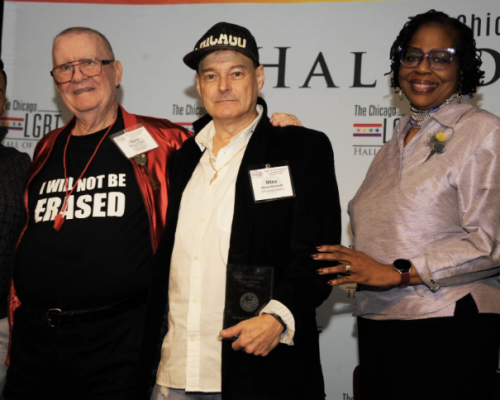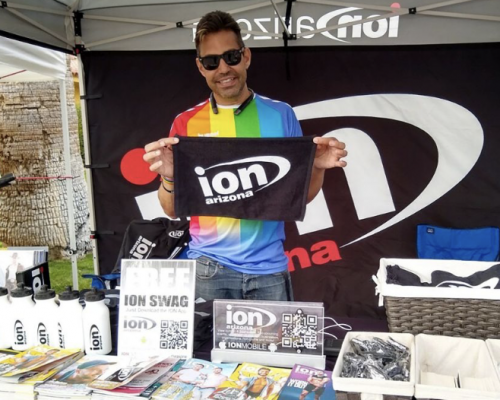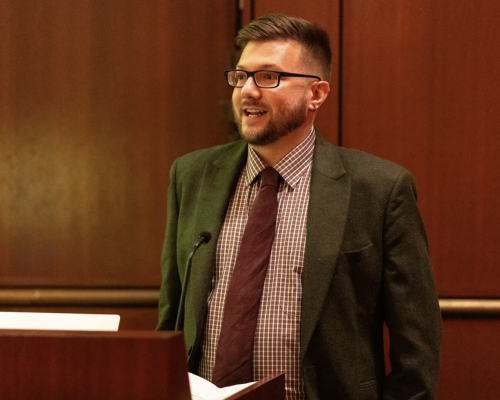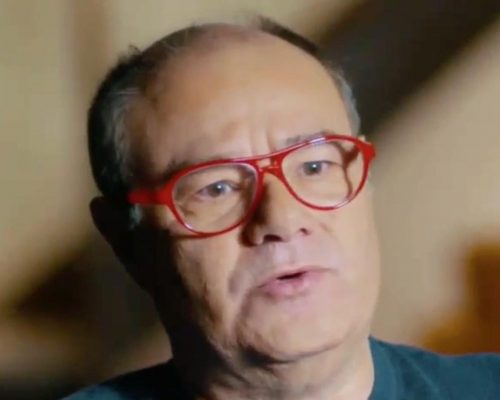LGBT media go all-out covering DOMA and Prop 8 cases, inside and outside the courtroom
by Chuck Colbert
Proposition 8 and the Defense of Marriage Act (DOMA) had high profile airings in late March at the US Supreme Court as the nine justices heard oral arguments in both cases. Inside and outside the courtroom, gay media were on hand to cover an historic moment in the legal struggle for full LGBT equality.
LGBT legal advocates and defenders of marriage equality hope the high court strikes down Section 3 of DOMA, a provision which denies legally married gay couples a wide range of federal benefits. They also hope the court overturns Proposition 8, which bans same-sex marriage in California.
And while both cases are complex, involving procedural matters such as legal standing — or who has the right to sue — and the politics of how the Obama administration weighed in, the big issue at hand is equal protection.
As veteran journalist Lisa Keen, founder and chief correspondent for Keen News Service, explained, “If we can set aside the legal standing questions, which could be important in terms of how these cases are ultimately resolved, the key question which each of these cases presents is equal protection, period. Should same-sex couples be treated the same as male-female couples? The court may dodge that question or put it off for another day, but that is the question. The irony is: It’s been answered several times before — in Romer v. Evans and in Lawrence v. Texas, to name the most important. But we’re in a place — similar to the right to privacy — where the question keeps getting asked in a new context.”
Keen News Service provides gay content for LGBT publications nationwide. For her coverage, Keen did a four-part series leading up to oral arguments. Her stories included reporting on the standing issues and the strength of the Obama administration’s friend of the court (or amicus) briefs and their potential to influence the justices. In another preview piece, Keen covered other amicus briefs and their advice to the justices. Keen News Service also provided a court-day guide to the arguments on March 26 and 27. And Keen reported on both days of oral arguments.
Asked about her approach to coverage and how it might differ from mainstream outlets, she said, “I try not to duplicate mainstream reports and I knew there would be a million mainstream news reports — many of them over-simplifying the cases as being about whether the justices would legalize same-sex marriage. That wasn’t the question before the court, but that’s how many in the mainstream media translate the cases to their general audiences. As most LGBT people knew and felt in their guts, the cases were really about treating LGBT people as equal citizens. So, I wanted to keep a focus on that, and on how much more complex these cases were than just about marriage. That’s why I took the time for a four-part preview examining the potential consequences of such things as legal standing and the political implications of how the Obama administration weighed in — things like that. And, obviously, on the coverage itself, I wanted to report the basic facts, but also the sort of details I knew an LGBT audience would be interested in.
“For instance, every audience might be interested in knowing that Justice Kennedy is likely the key swing vote, but LGBT audiences would be especially interested in whether he was asking ‘gay friendly’ questions. Plus, we’re just getting to know Justices Sotomayor and Kagan, so I knew LGBT readers would be eager to know what they said and asked that might say something about how liberal or moderate they might be on LGBT-related matters.” Keen News Service also included links to the transcripts and audio.
Like Keen, the Washington Blade’s Chris Johnson was in the courtroom for oral arguments. “I wanted to focus on what the mood of the justices were on different issues of standing and were they showing their hands in how they might rule,” he said. At the same time, “I was trying to get a flavor of the arguments.”
Time was of the essence, too, said Johnson. “I wanted quickly to compile something, get it up online, so that it would get out there and show the Blade had a presence in the courtroom.” A week later, Johnson reported a more expansive piece on what the justices said, and based on that, how they might rule.
The Advocate had a presence in court with the return of special correspondent Kerry Eleveld who filed a story on the impact of the Supreme Court cases on grassroots activism, a profile of plaintiff Edie Windsor and her lawyer, Roberta Kaplan; and a piece about five key takeaways from oral arguments.
Metro Weekly, also based in the nation’s capital, also had a presence inside for oral arguments with reporter Justin Snow filing more than a half-dozen reports on Poliglot, the publication’s “queer spin on politics.” One of Snow’s pieces zeroed in on Justice Elena Kagan’s reading from US House of Representative Reports during the DOMA debate, which stated that “Congress decided to reflect an honor of collective moral judgment and to express moral disapproval of homosexuality.”
“Is that what happened in 1996?” she asked the attorney defending DOMA, according to Snow’s reporting, “with gasps and murmurs from the courtroom.”
Not all the action was inside the court. The Blade’s Michael K. Lavers covered that beat, which included an interfaith prayer service early on March 26, as well as protests and rallies later on that day and the next.
“I would say roughly 2,000 same-sex marriage supporters attended the rally in front of the court,” said Lavers. “As the rally continued, a group of roughly 2,000 same-sex marriage opponents marched in front of the court. A significant portion of the protesters were Latinos, and they faced off against same-sex marriage supporters. The opponents were loud, boisterous but peaceful. I deliberately stood between the two groups on First Street, N.E., for several minutes to take pictures to post on Facebook and Twitter, but to also get an up-close sense of the conflicting sentiments towards the issue.”
Lavers also said about 1,000 same-sex marriage supporters returned to the Supreme Court on March 27 to rally before the justices heard arguments in the DOMA case. “This honestly surprised me a bit because I had expected fewer people would gather in front of the court on the second day,” he said.
For Lavers, one of the more memorable moments of that day came when the crowd started chanting Edith Windsor’s name as she and her lawyers left the Supreme Court, he said. (Windsor is the namesake in United States v. Windsor, the name of the DOMA case.)
The Proposition 8 and DOMA cases resonated across the country, especially in California where marriage equality supporters rallied in San Francisco on Monday, March 26.
In actions coordinated nationwide, hundreds also rallied for marriage equality in various cities, including Boston, Chicago, New York , even small towns in Mississippi.
Bay Area Reporter’s James Patterson covered the San Francisco demonstration. “It turned out to be one of the biggest protests in San Francisco over a gay rights issue in several years, probably since Prop 8 passed back in 2008,” said news editor Cynthia Laird. “So we had some good local coverage. Our readers — and the community at large — did have a special interest in the Prop 8 case. All the local media had extensive reporting of the Monday night protest, and of course the arguments the next day.”
Asked about the mood of the demonstration, “I would say the gist of it was cautious optimism — not anger — and it was sort of a celebratory spirit,” Laird said. “I think participants wanted people to see that we deserve equal marriage rights, and that we were optimistic the justices would rule in our favor. I would say the crowd was several thousand strong.”
In Los Angeles, veteran journalist Karen Ocamb, news editor for Frontiers magazine and blogger for LGBT POV, said her coverage included “the usual news stories, often with links to the extraordinary analysis written elsewhere by some of our brilliant legal eagles and scholars and provided a SCOTUS Guide. I also did a phoner with activist Robin Tyler, a plaintiff in the original marriage lawsuit, who attended the Prop 8 hearing and was outraged over marriage equality being called an ‘experiment.’”
Prop 8 also inspired Frontiers to create a Marriage Timeline and a Marriage Equality channel on FrontiersLA.com, with news stories and features such as a photo essay, still in progress, on the story behind California’s same-sex marriage ban.
“My reporting is in the context of the long history of relationship recognition in California,” said Ocamb. “In some ways, it is difficult to describe just how deeply stunned liberal Californians were when Prop 8 passed. Young LGBT people, in particular, were jolted into instant awareness that no matter how cool they might be among their friends, California voters thought it was OK to deny them equal rights and happiness. But that jolt created a whole new generation of activists, which has also be interesting to cover almost like a sub-textual revolution.”
Volume 15
Issue 2
TOP STORY






